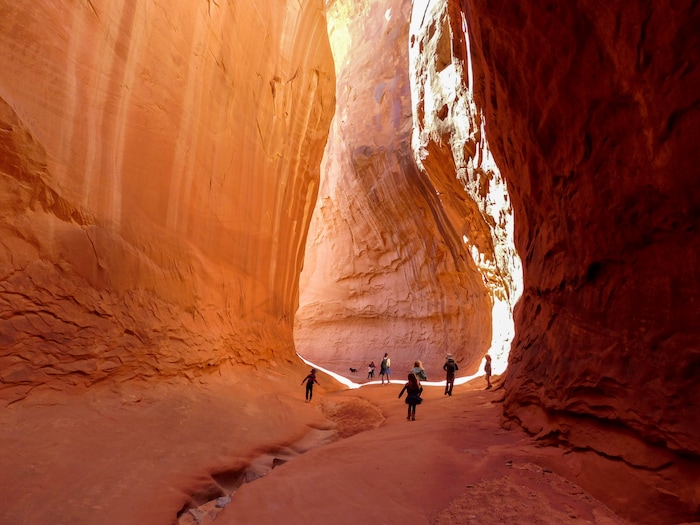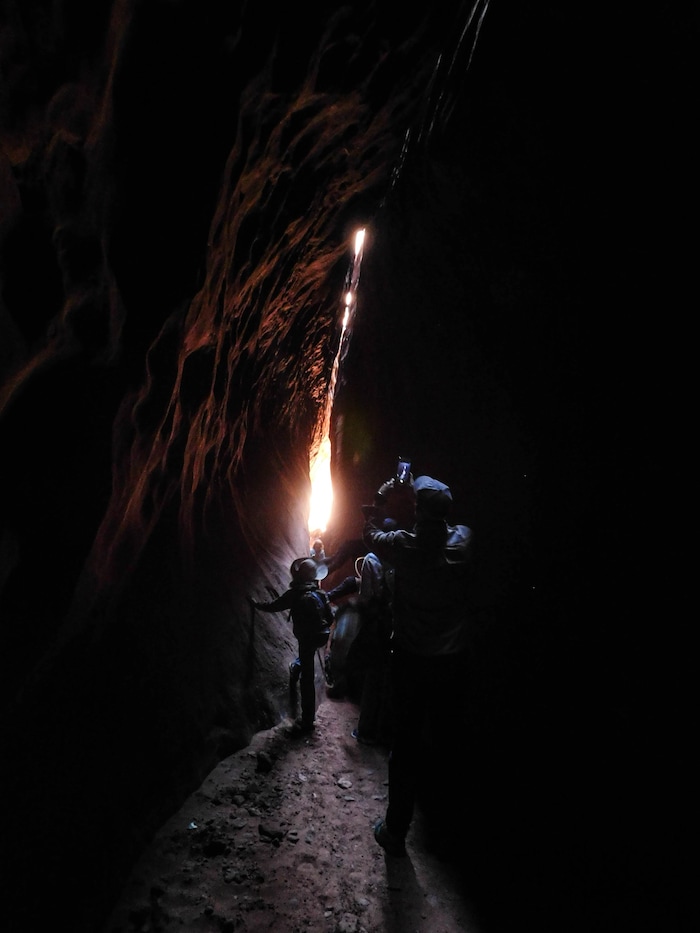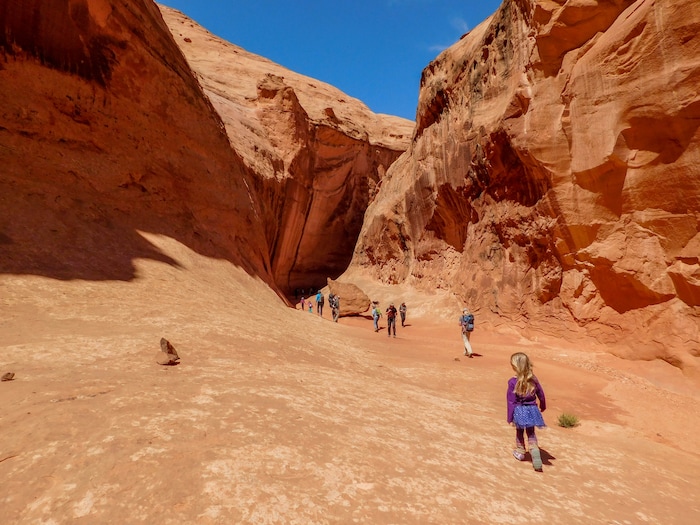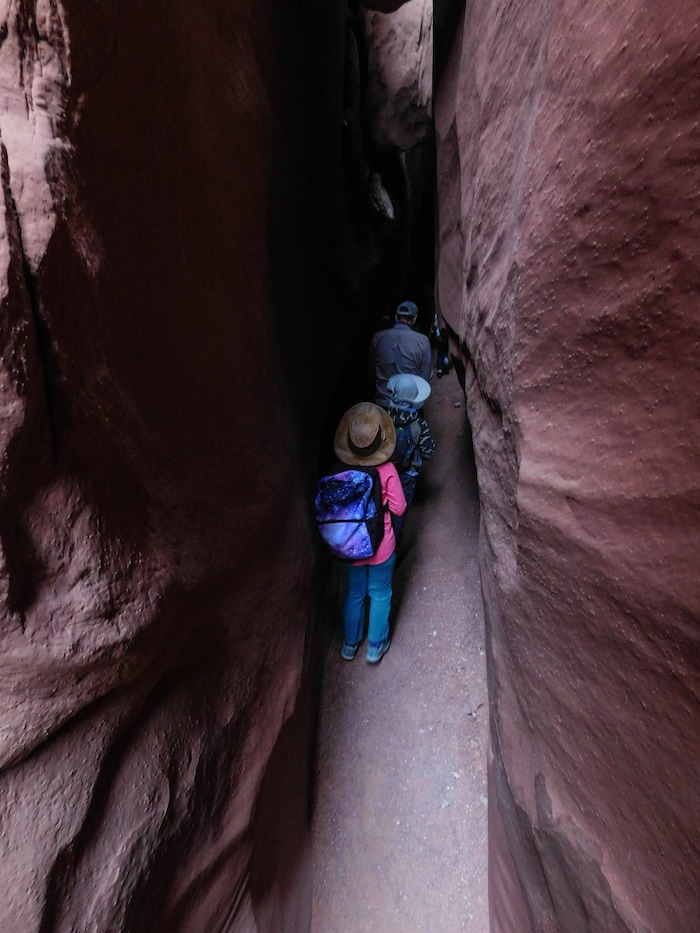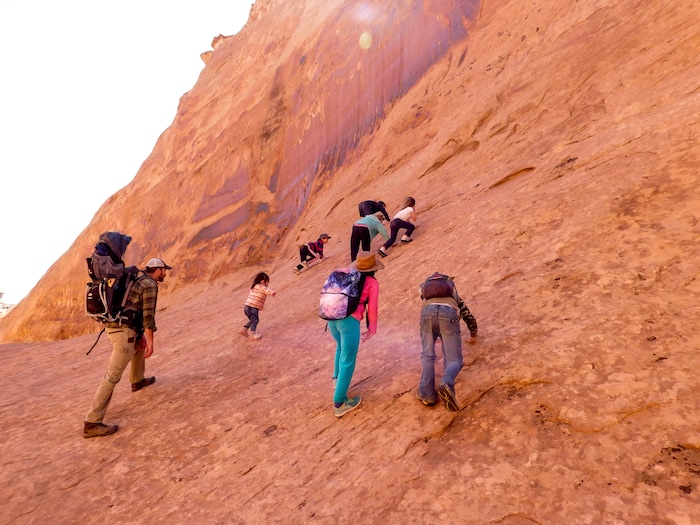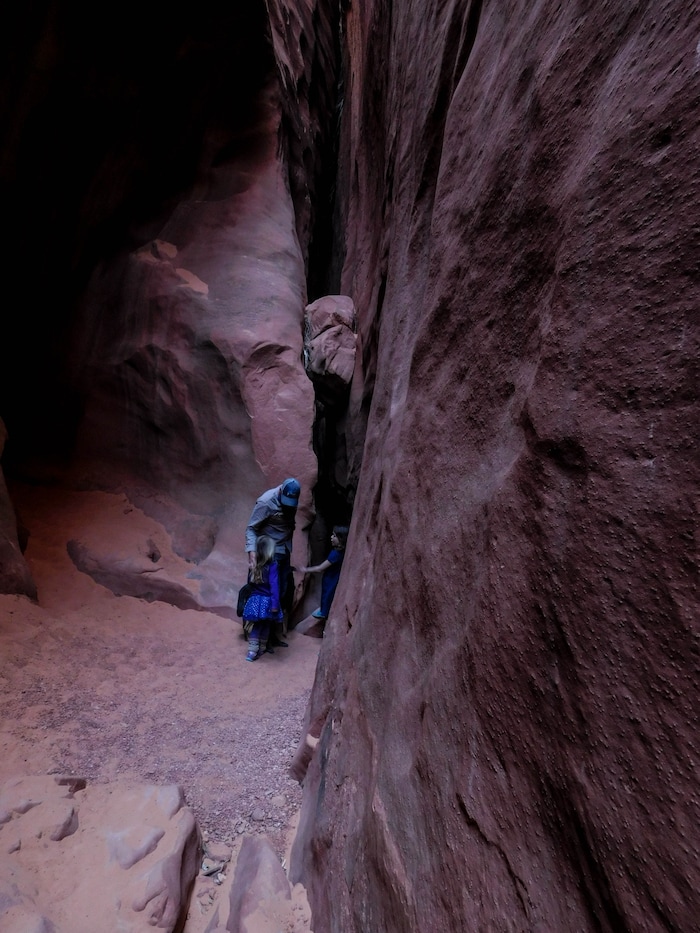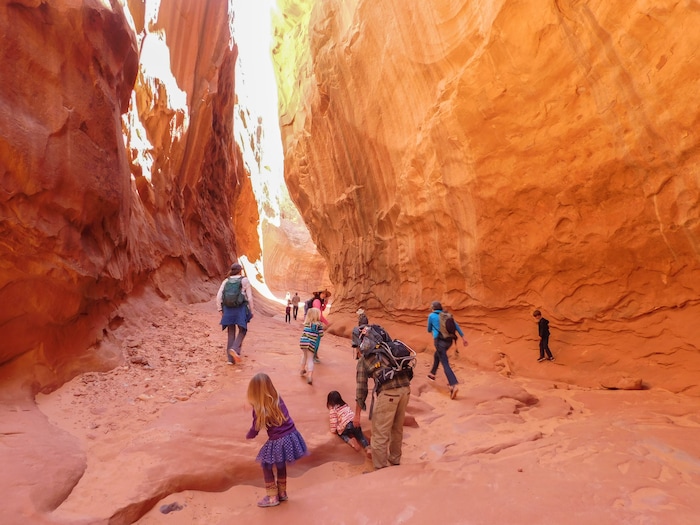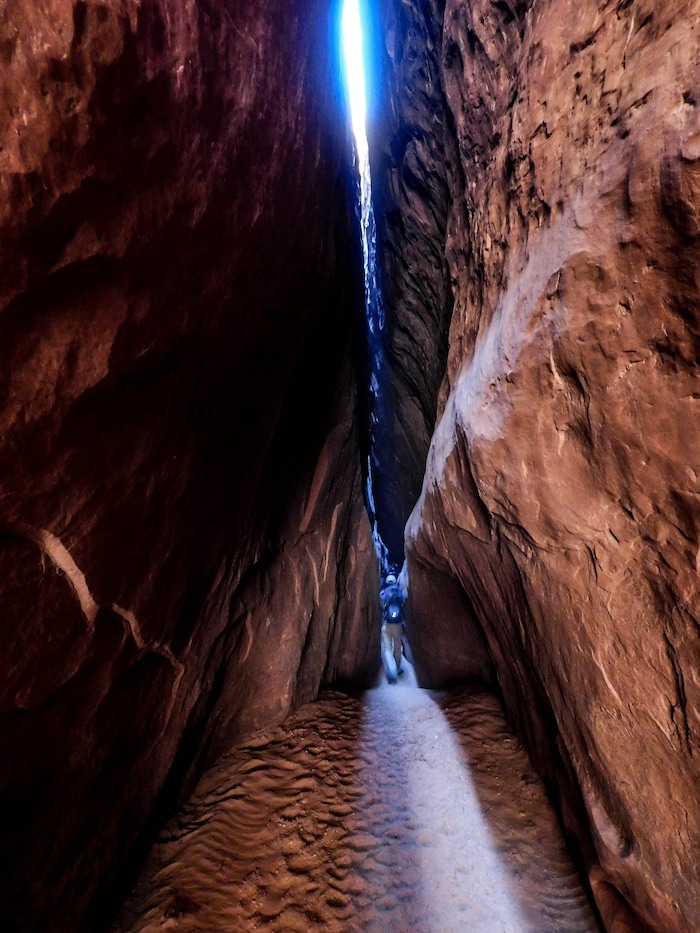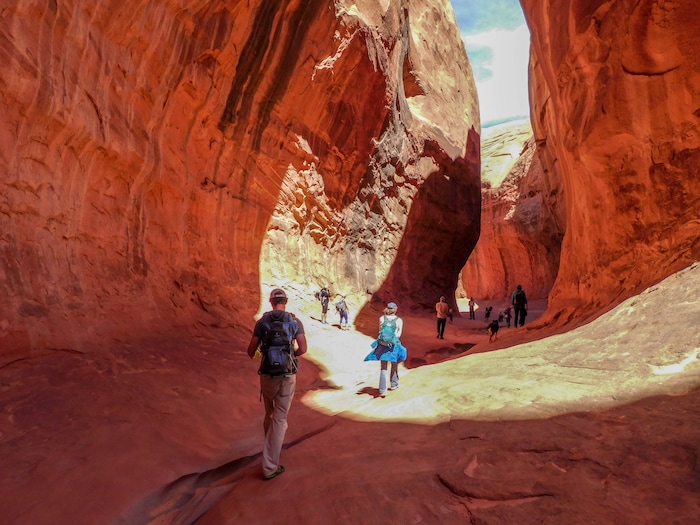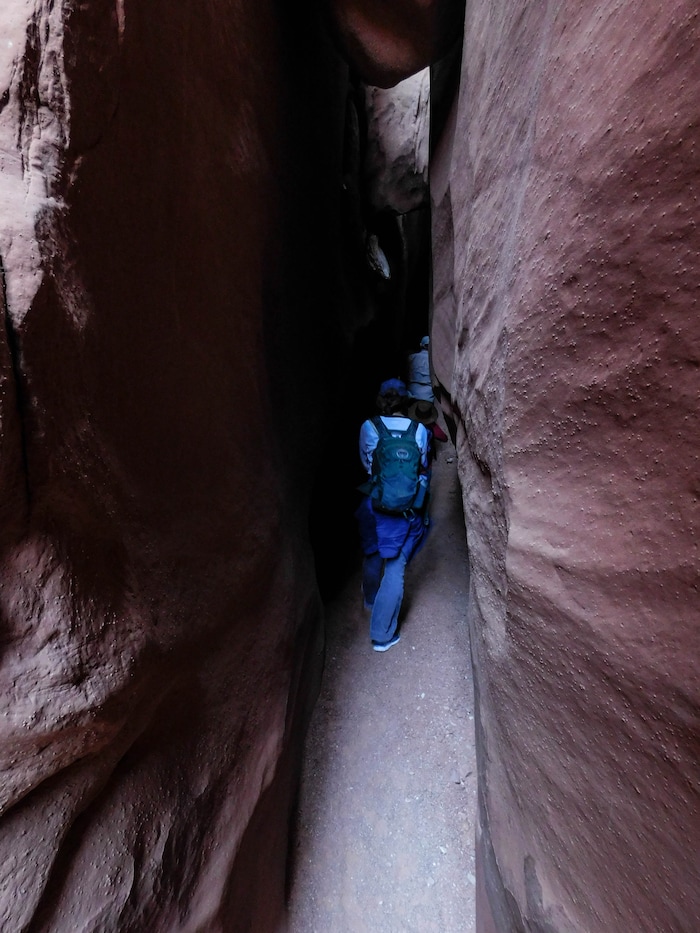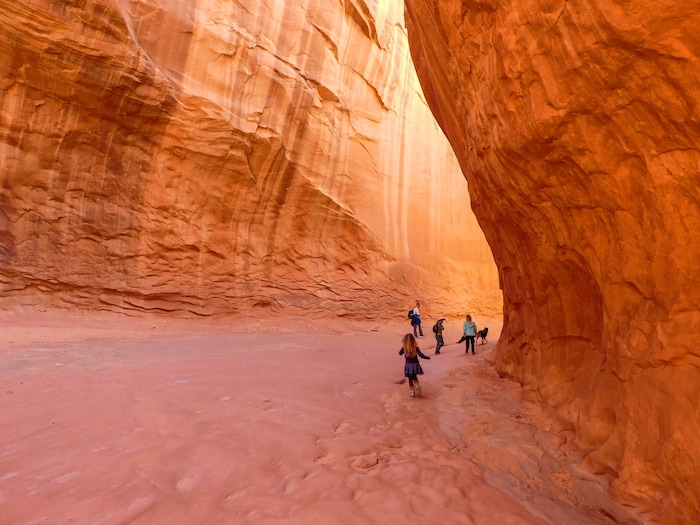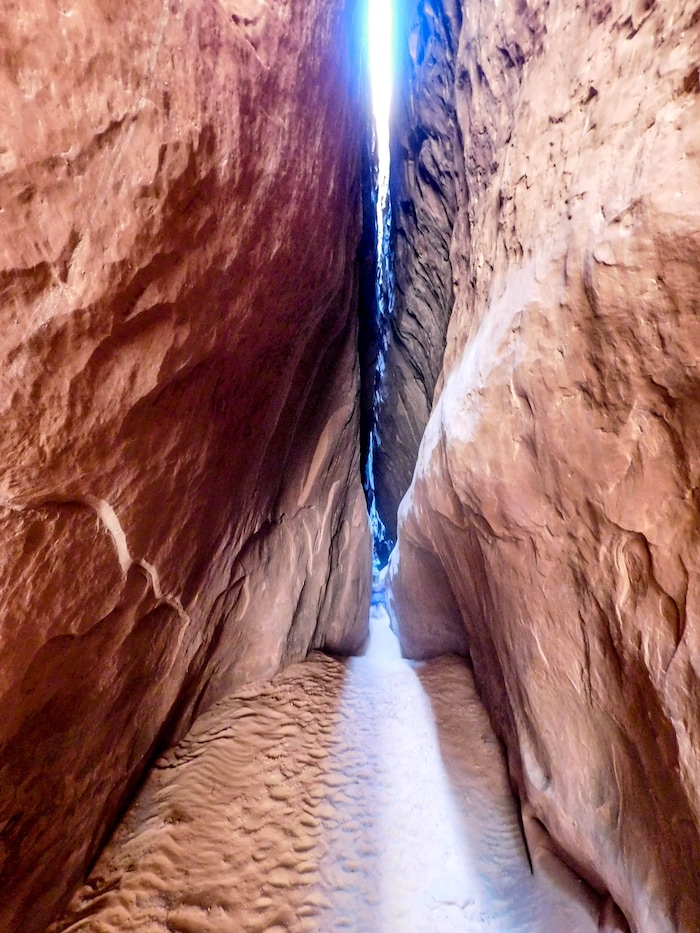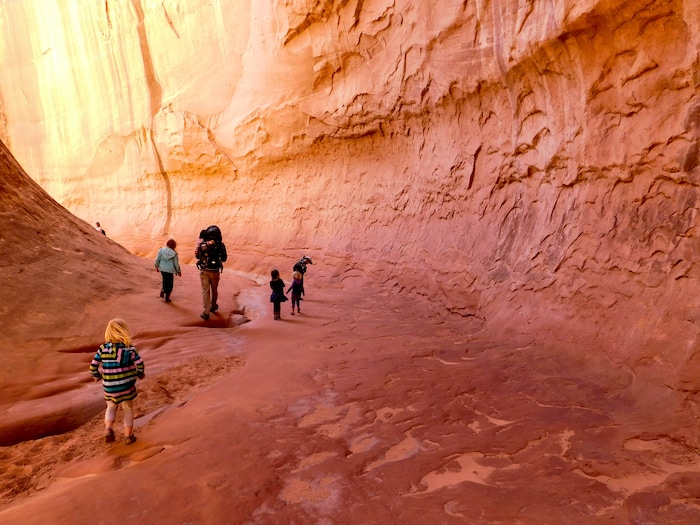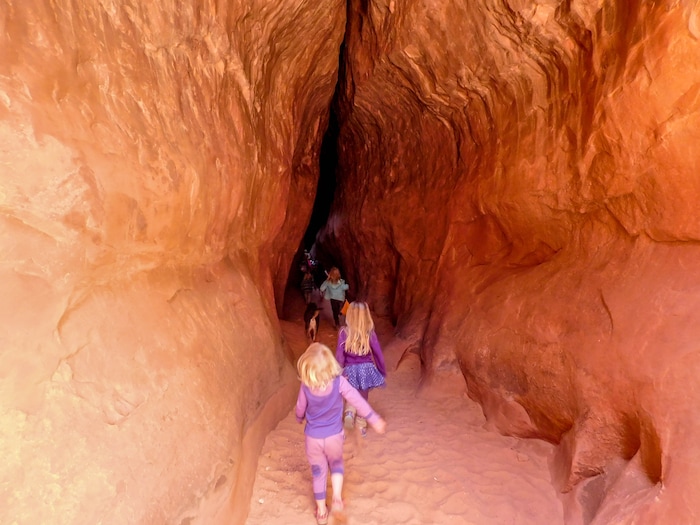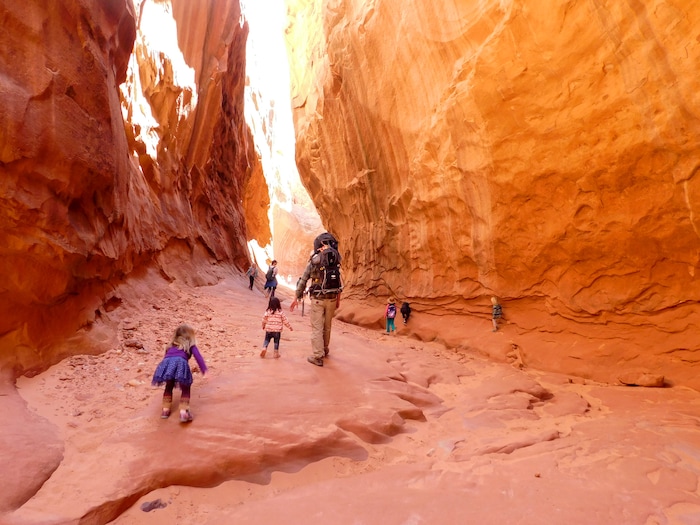Leprechaun Canyon was a quiet place the first few times I visited.
The whispers of my friends and family echoed off the towering orange walls. No one else was there. There was no official parking or trail marker; our group met at a mile marker on State Road 95 north of Lake Powell. Word was this was a “secret” canyon. I kept it off our Hike of the Week feature.
Fast forward a decade or so to 2017. Leprechaun Canyon is searchable on Google Maps. It has five stars on TripAdvisor.com. On my most recent visit, a trail kiosk had been erected, a newly graded parking lot was full of cars, and several other groups of hikers joined mine in the canyon.
None of this was surprising. I’d done the nontechnical part of this hike several times, and each year I found more people there. Word spreads. A glorious slot canyon just a mile from the road is not going to stay “secret” for long. Especially not with the internet.
But it got me thinking: When is a place too secret to talk about?
The friend who first told me about Leprechaun did not want me to write this. A decade ago, I would have agreed (and I’ve made such agreements regarding other places). But now I think critical mass has been reached, the cat is out of the bag and Leprechaun no longer is any more secret than the other places I write about.
My friend sees the problems of exposure more incrementally than I do; from his view, every bit of publicity puts this canyon at greater risk of overcrowding, degradation and unwieldy search-and-rescue efforts, and that is a bad thing.
On the other end of the spectrum, some of my co-workers and former colleagues at The Tribune recently had a debate about “secret places” in outdoor rec. One argued that our first duty is to you, our readers, and we can’t serve you if we keep secrets.
I don’t agree with that, either. We make judgments about the public good of withholding or disclosing information all the time. I worked the crime beat for years, and I would take seriously police requests not to print names in fatalities before family could be notified, or warnings that publicizing certain details could jeopardize an investigation. I weighed subjects’ personal privacy against your need to know. Our default mode is transparency, but in some cases we decide that the damage of disclosure is high and the benefit low.
In an outdoors context, Bears Ears National Monument has probably the best examples of secrets I won’t share. I know of sites there that are beautiful and photogenic — but also remote, unlabeled on maps and flagged by land managers for specific archeological sensitivities. There are plenty of other sites to visit in that area that are set up for visitors. Go to one of those.
So what tips the scales for me in Leprechaun Canyon?
First, I didn’t promise confidentiality, which would upend the ethical dynamics here. But the canyon now appears in enough online guides that it’s widely knowable from other sources.
Second, there aren’t a lot of other destinations like it. It’s on a paved road, so any car can get there. It’s a short hike, so young kids and lower-stamina hikers can enjoy it. It’s not in a national park, it’s free of charge and it’s walkable enough for most dogs. Little Wild Horse Canyon is the only comparably accessible slot canyon I can think of in that area — and it’s extremely cool, but of a very different character from Leprechaun.
Third, the site has been developed for visitation. Before the BLM put in a parking lot, visitors were parking on the highway or willy nilly on fragile desert soil — neither is a good option. I wouldn’t have wanted to add to that mess. Now I feel better about sending you there.
There is one other thing that makes me uneasy about the code of secret-keeping in southern Utah: potential hypocrisy.
There are legitimate worries that sensitive places should be preserved and protected, and visitor management strategies are crucial. But there also is a long and strong tradition of hostility to newcomers in this corner of the world, and feelings of entitlement to this land because “I was here first” or “My family was here first.” I worry that the virtuous former may occasionally stand as cover for the arrogant latter.
Public land is public. If people are “ruining” a place by being there, why do I get to be there? What makes me so special?
And yet.
There are places I won’t share, but I’ll still visit. Repeatedly. (Yes, the layers of contradiction are dizzying.) In the decade I’ve lived in Utah, I have watched some of my favorite places become unvisitable due to crowding, a lot of them right in Salt Lake County. There are farther-flung spots that would be devastated by the kind of traffic I’ve seen at Leprechaun.
So while I encourage you to visit Leprechaun and to internalize the experience as a reason to advocate for our wild places, I also think it’s worth seeing as a bellwether for what could happen elsewhere.
This used to be a place that almost no one knew of, with no name and minimal human impact. But things change fast. Social media makes an easy brag of every adventure. We want to share the excitement, to be helpful, to inspire, to develop community with other fun-seekers. Much has been made of Instagram’s role in driving unmanageable crowds to remote natural wonders. Certainly a newspaper article could do the same.
For my part, I’ll always share with discretion. We might not agree on the balance. Some will feel I’ve invaded their happy place; others will complain I’m showing you nothing new, and I must not know much about the places I’m covering.
The truth is, I still have a lot to learn. But I’ll try not to be cavalier about what I don’t know.
